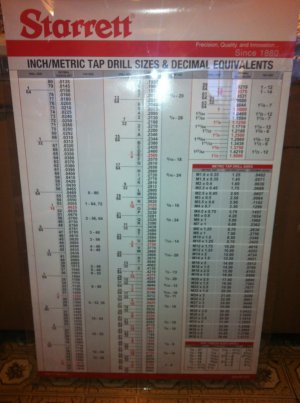- Joined
- Nov 19, 2011
- Messages
- 966
thats a great idea too ty for the info:biggrin:HI
I normaly measure a bolt of the same size and turn the bar to that size .
If you want the tapping size for a hole, and you dont have the charts to hand ,find a drill that fits the inside of a nut of the size you want
I know this advice is crude, but when needs must, it works.
Regards BRIAN.

